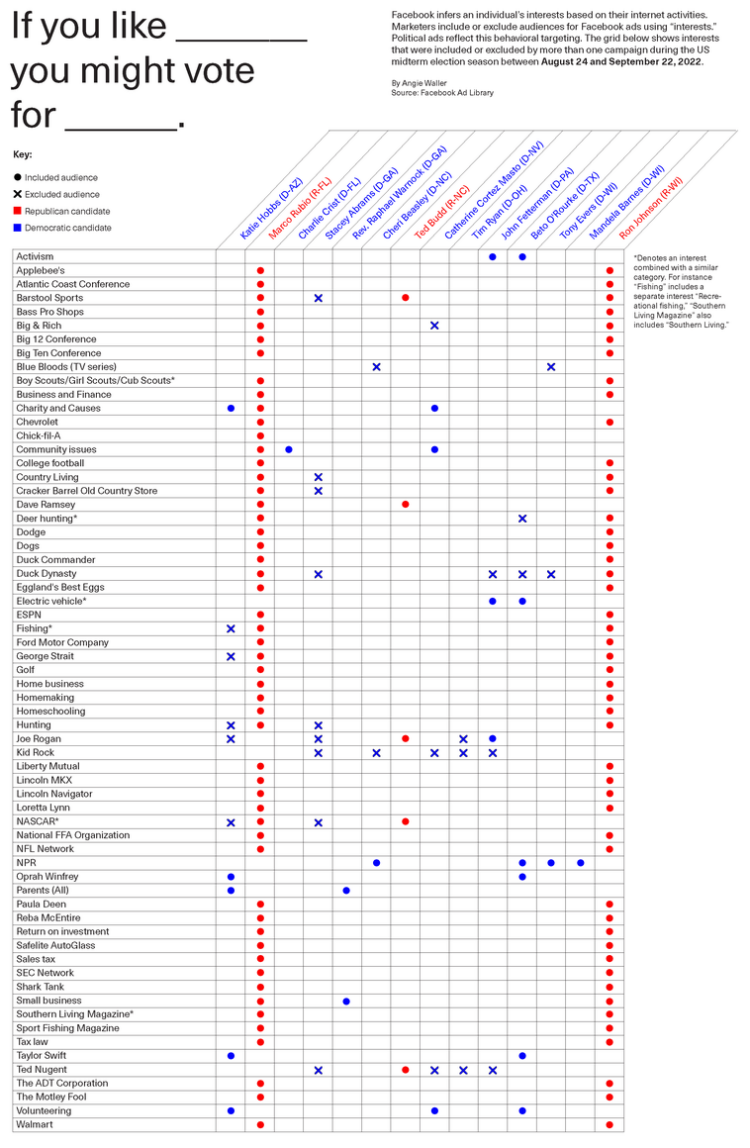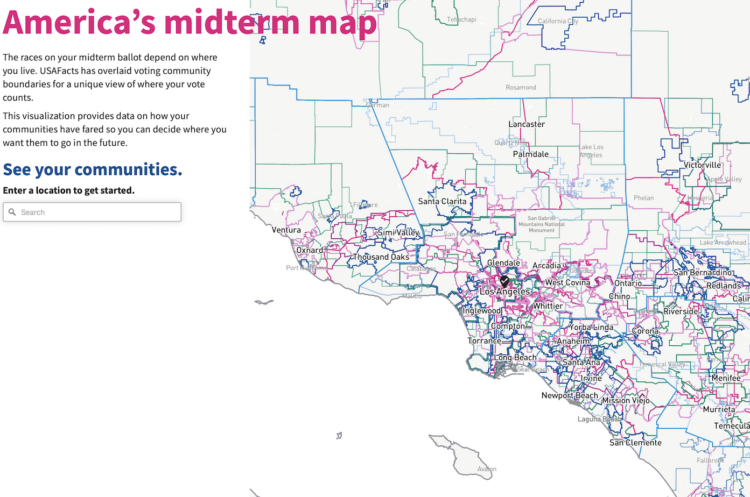By Angie Waller, this table shows how Facebook thinks you’ll vote based on what you like. It’s a straightforward view that’s fun to look at. In particular, I like the excluded audiences for certain topics marked with an x.
I often see ads that are completely unrelated to my interests, and a small part of me feels like I’m winning in some way, even though I’m almost definitely losing.
Tags: Angie Waller, elections, facebook






 The tax plans of Ted Cruz and Donald Trump might seem fine if you don’t think about the actual values. Tax cuts. Less government spending. But then it gets tricky when you look at what they’re actually proposing. Alvin Chang for Vox provides a
The tax plans of Ted Cruz and Donald Trump might seem fine if you don’t think about the actual values. Tax cuts. Less government spending. But then it gets tricky when you look at what they’re actually proposing. Alvin Chang for Vox provides a 
